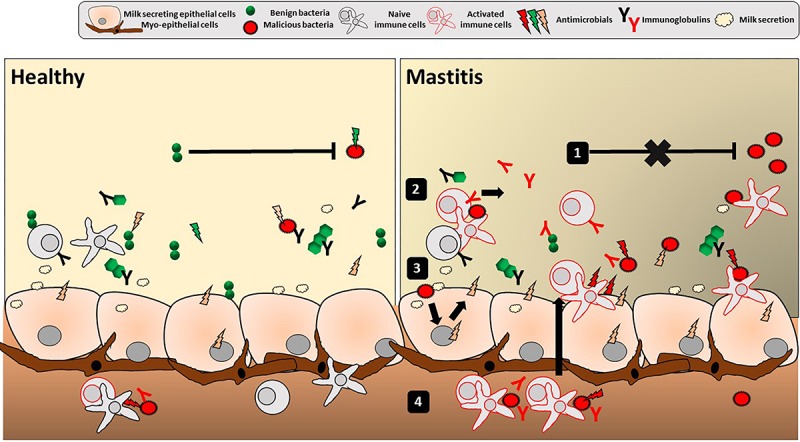FIGURE 2.

Mucosal immune features in the human mammary gland lobules. Depicted is the overall luminal interface of the mammary gland lobules and ducts where hMM cross-talk with epithelial cells occurs. Classical mucosal barrier immune features of stratification (with secretion of mucins, AMPs and IgA) and compartmentalization (with local confinement, control, and killing of bacteria) are present in breast gland and/or human milk, potentially playing a role in mother’s protection, mammary gland physiology and the hMM found under healthy conditions (left panel). Any alteration of stratification and compartmentalization could trigger transition from commensal colonization to detrimental hMM – host interactions and ultimately lead to mammary gland bacterial infection, i.e., mastitis (right panel). Altered hMM (1) may exert less bacteriostatic pressure against pathogens, (2) trigger non-specific inflammatory reaction and/or specific reaction (with immunoglobulins) against those pathogens as well as (3) epithelial cell reaction with secretion of proinflammatory mediators (cytokines, chemokines, and AMPs). Altogether, this leads to (4) attraction of additional activated immune cells by chemotaxis in the breast gland tissue and milk. The inflammation may result in breast pain, swelling, warmth, and redness characteristic to mastitis.
